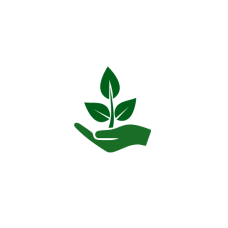Native Plants for Every Season
If you want a garden that buzzes with life, supports local wildlife, and looks beautiful all year round native plants are the way to go.
At Wild Roots Gardening, we love native plants because they’re perfectly adapted to our local climate, soil, and ecosystems. That means they’re low-maintenance, resilient, and often better for pollinators than many showy imports.
And the best part? There’s a native plant for every season.
Spring Stars
As the days lengthen and the soil warms up, these native plants burst into life:
🌱 Primrose (Primula vulgaris)
One of the first wildflowers to bloom. Their soft yellow flowers are a welcome sight and a vital early food source for bees.
🌱 Wood Anemone (Anemone nemorosa)
Spreading through woodland areas, these delicate white blooms form magical carpets in spring.
🌱 Cowslip (Primula veris)
A cousin of the primrose, cowslips add cheerful yellow clusters to meadows and borders.
Summer Showstoppers
By mid-year, the garden is buzzing and these natives are thriving:
🌼 Oxeye Daisy (Leucanthemum vulgare)
Tall, cheerful flowers that bring a meadow feel to any garden. Loved by hoverflies and solitary bees.
🌼 Field Scabious (Knautia arvensis)
Pale purple flowers with long flowering periods. Excellent for pollinators, especially butterflies.
🌼 Common Knapweed (Centaurea nigra)
Another pollinator favourite this tough, thistle-like flower thrives in poor soil and adds a burst of colour.
Autumn Glow
As the garden starts to wind down, some plants keep the show going:
🍂 Devil’s-bit Scabious (Succisa pratensis)
A late bloomer with rich blue-purple flowers. A crucial food source for late-flying bees and butterflies.
🍂 Michaelmas Daisy (Aster amellus)
Dainty purple flowers that bloom just as most other plants are fading, lighting up the autumn border.
🍂 Wild Marjoram (Origanum vulgare)
This aromatic herb is brilliant for bees and adds a lovely flavour to your kitchen too!
Winter Interest
Even in winter, native plants can bring beauty and life to the garden:
❄️ Holly (Ilex aquifolium)
Its evergreen leaves provide shelter for birds and insects, and the red berries are food for thrushes and blackbirds.
❄️ Dogwood (Cornus sanguinea)
Bare branches may sound dull, but dogwood’s red stems add colour to winter beds. It looks stunning in the frost.
❄️ Ivy (Hedera helix)
Often overlooked, ivy is a superstar in winter. It offers late flowers for insects and dense cover for hibernating creatures.
Why go native?
Better for wildlife: Native plants support more birds, bees, butterflies, and beetles.
Less work: They’re adapted to your soil and climate, so they need less water and care.
Natural beauty: There's a subtle charm to native flowers and they help your garden feel more connected to the wider landscape.
Planting even a small patch with native species makes a big difference. Whether you’re rewilding a corner or planning a full pollinator-friendly garden, native plants are the roots of it all.
We need your consent to load the translations
We use a third-party service to translate the website content that may collect data about your activity. Please review the details in the privacy policy and accept the service to view the translations.

